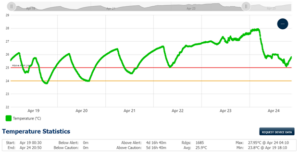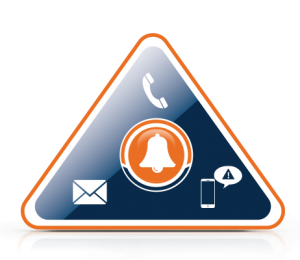[fusion_builder_container hundred_percent=”no” equal_height_columns=”no” menu_anchor=”” hide_on_mobile=”small-visibility,medium-visibility,large-visibility” class=”” id=”” background_color=”” background_image=”” background_position=”center center” background_repeat=”no-repeat” fade=”no” background_parallax=”none” enable_mobile=”no” parallax_speed=”0.3″ video_mp4=”” video_webm=”” video_ogv=”” video_url=”” video_aspect_ratio=”16:9″ video_loop=”yes” video_mute=”yes” video_preview_image=”” border_size=”” border_color=”” border_style=”solid” margin_top=”” margin_bottom=”” padding_top=”” padding_right=”” padding_bottom=”” padding_left=””][fusion_builder_row][fusion_builder_column type=”1_1″ layout=”1_1″ spacing=”” center_content=”no” hover_type=”none” link=”” min_height=”” hide_on_mobile=”small-visibility,medium-visibility,large-visibility” class=”” id=”” background_color=”” background_image=”” background_position=”left top” background_repeat=”no-repeat” border_size=”0″ border_color=”” border_style=”solid” border_position=”all” padding=”” dimension_margin=”” animation_type=”” animation_direction=”left” animation_speed=”0.3″ animation_offset=”” last=”no”][fusion_text]
Temperature Monitoring in the Cloud
[/fusion_text][/fusion_builder_column][/fusion_builder_row][/fusion_builder_container][fusion_builder_container hundred_percent=”no” equal_height_columns=”no” menu_anchor=”” hide_on_mobile=”small-visibility,medium-visibility,large-visibility” class=”” id=”” background_color=”” background_image=”” background_position=”center center” background_repeat=”no-repeat” fade=”no” background_parallax=”none” enable_mobile=”no” parallax_speed=”0.3″ video_mp4=”” video_webm=”” video_ogv=”” video_url=”” video_aspect_ratio=”16:9″ video_loop=”yes” video_mute=”yes” video_preview_image=”” border_size=”” border_color=”” border_style=”solid” margin_top=”” margin_bottom=”” padding_top=”” padding_right=”” padding_bottom=”” padding_left=””][fusion_builder_row][fusion_builder_column type=”1_2″ layout=”1_2″ spacing=”” center_content=”no” hover_type=”none” link=”” min_height=”” hide_on_mobile=”small-visibility,medium-visibility,large-visibility” class=”” id=”” background_color=”” background_image=”” background_position=”left top” background_repeat=”no-repeat” border_size=”0″ border_color=”” border_style=”solid” border_position=”all” padding=”” dimension_margin=”” animation_type=”” animation_direction=”left” animation_speed=”0.3″ animation_offset=”” last=”no”][fusion_text]
Background
Cloud computing is beginning to have an impact on the conduct of clinical trials, healthcare compliance, and storage of pharmaceuticals[1]. Increasing regulatory pressures, and the need to reduce cost, automated “cloud monitoring” has become a viable option for Hospitals with a need to focus on their core competencies by shifting away from dependencies of manual compliance monitoring. Manual temperature monitoring / handwritten temperature logging along with engineering and compliance infrastructures to manage out of specification pharmaceutical storage has become an easy and growing target of regulatory auditing bodies[2].
Challenge
Good clinical practice (GLP) is a mindset that is absolutely essential to the protection of patients’ rights and the assurance of data integrity in clinical research trials. Pharmaceutical supply / clinical storage / real-time temperature monitoring and recorded data supporting GLP, JCAHO and healthcare industry requirements are critical. Pressure to reduce healthcare costs and shift towards cloud computing for automating labor-intensive costly compliance tasks has grown dramatically[3]. We can also expect a greater focus on security, privacy, data protection, and compliance management as reliance on the cloud grow[4]. With all of the benefits of cloud computing, the biggest challenge may be finding companies who understand how to apply cloud computing to the complexities and unique challenges of the pharmaceutical and healthcare systems.
[/fusion_text][/fusion_builder_column][fusion_builder_column type=”1_2″ layout=”1_2″ spacing=”” center_content=”no” hover_type=”none” link=”” min_height=”” hide_on_mobile=”small-visibility,medium-visibility,large-visibility” class=”” id=”” background_color=”” background_image=”” background_position=”left top” background_repeat=”no-repeat” border_size=”0″ border_color=”” border_style=”solid” border_position=”all” padding=”” dimension_margin=”” animation_type=”” animation_direction=”left” animation_speed=”0.3″ animation_offset=”” last=”no”][fusion_text]
Approach
Successful selection of a company providing private or public hosting for cloud temperature monitoring will begin with the ability to validate conformity to FDA CFR 21 Part 11 compliance and meeting expectations of governing regulatory agencies tasked with ensuring healthcare compliance. Beyond FDA and JCAOH compliance, companies will need expertise in applying for security and data protection in ways that provide flexibility in meeting the dynamic environment as pharmaceutical and healthcare system continues to see unprecedented changes in the future of cloud compliance monitoring.[/fusion_text][fusion_text]
Result
Reductions in capital expenditures or CAPEX intensive deployments for compliance monitoring are replaced with operating expenditures, or software as a service (SaaS). The business advantages of cloud temperature monitoring SaaS include low-cost installation, ease of use, compliance standardization, streamlining and feedback for maintaining 24/7 automated pharmaceutical storage operations. On-site installation and a trial period for such system by stakeholders are important in understanding and evaluating the value of SaaS cloud temperature monitoring.[/fusion_text][/fusion_builder_column][/fusion_builder_row][/fusion_builder_container][fusion_builder_container hundred_percent=”no” equal_height_columns=”no” menu_anchor=”” hide_on_mobile=”small-visibility,medium-visibility,large-visibility” class=”” id=”” background_color=”” background_image=”” background_position=”center center” background_repeat=”no-repeat” fade=”no” background_parallax=”none” enable_mobile=”no” parallax_speed=”0.3″ video_mp4=”” video_webm=”” video_ogv=”” video_url=”” video_aspect_ratio=”16:9″ video_loop=”yes” video_mute=”yes” video_preview_image=”” border_size=”” border_color=”” border_style=”solid” margin_top=”” margin_bottom=”” padding_top=”” padding_right=”” padding_bottom=”” padding_left=””][fusion_builder_row][fusion_builder_column type=”1_1″ layout=”1_1″ spacing=”” center_content=”no” hover_type=”none” link=”” min_height=”” hide_on_mobile=”small-visibility,medium-visibility,large-visibility” class=”” id=”” background_color=”” background_image=”” background_position=”left top” background_repeat=”no-repeat” border_size=”0″ border_color=”” border_style=”solid” border_position=”all” padding=”” dimension_margin=”” animation_type=”” animation_direction=”left” animation_speed=”0.3″ animation_offset=”” last=”no”][fusion_text]
References
[1] FDA Status Update to Science Board Scientific Database & Scientific Computing Initiatives Dr. Vicki Seyfert-Margolis January 2012
[2] ICH Findings: Pharmaceutical cold storage audit trends – top ten violations 2009, 2010
[3] Science Board Subcommittee Review of Information Technology August 2009
[4] Social Media, cloud computing and mobility in the life sciences, Andrew J. Hollander, LifeSci Trends Sept 2011[/fusion_text][/fusion_builder_column][/fusion_builder_row][/fusion_builder_container]



